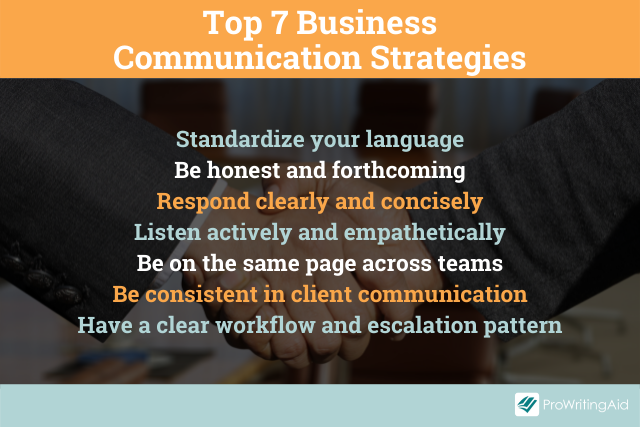Effective business communication is crucial for achieving organizational goals, fostering collaboration, and ensuring clarity. Clear and concise communication minimizes misunderstandings and enhances productivity. Here are key strategies to achieve effective business communication.

Know Your Audience
Understanding your audience is fundamental to effective communication. Tailor your message to their needs, preferences, and level of understanding. Whether you’re addressing team members, clients, or stakeholders, consider their background and expectations. This approach helps ensure that your message resonates and is easily comprehended.
Use Simple and Direct Language
Simplicity is key to clear communication. Avoid jargon, technical terms, or complex language that might confuse your audience. Use straightforward and direct language to convey your message. Clear, concise sentences and familiar vocabulary make it easier for recipients to grasp your point without ambiguity.
Organize Your Message Effectively
A well-organized message enhances clarity. Structure your communication with a clear introduction, body, and conclusion. Start with the main point or objective, followed by supporting details, and end with a summary or call to action. A logical flow helps the audience follow and understand your message more easily.
Be Concise
Conciseness is essential for effective communication. Stick to the main points and avoid unnecessary details. Eliminate filler words and redundant information to keep your message focused. Brevity respects your audience’s time and ensures that key information stands out, making it more likely to be remembered.
Use Bullet Points and Headings
In written communication, bullet points and headings can enhance readability and organization. Bullet points break down information into digestible parts, while headings guide the reader through different sections of your message. These tools help emphasize important points and make your content easier to scan and understand.
Provide Clear Instructions
When giving instructions, clarity is crucial. Be specific about what actions are required, who should take them, and by when. Use step-by-step instructions if necessary, and provide examples if they help clarify your point. Clear instructions reduce the likelihood of errors and ensure that tasks are completed as expected.
Avoid Ambiguity
Ambiguity can lead to misunderstandings and errors. Be precise in your language and avoid vague terms. Clearly define any technical terms or industry-specific jargon. If a term could have multiple meanings, provide context to ensure that your audience understands your intended message.
Use Visual Aids Wisely
Visual aids such as charts, graphs, and diagrams can enhance understanding, especially for complex information. Use visuals to complement your message and provide a clearer representation of data or processes. Ensure that visuals are relevant and easy to interpret, avoiding clutter or unnecessary details.
Seek Feedback
Regular feedback can improve your communication skills. Encourage your audience to ask questions or provide feedback on your message. This interaction helps identify areas for improvement and ensures that your communication is effective. Being open to feedback also demonstrates a commitment to clear and effective dialogue.
Proofread and Edit
Before sending out any written communication, always proofread and edit for clarity and conciseness. Check for grammatical errors, unclear phrases, or redundant information. Editing helps ensure that your message is polished and professional, minimizing the risk of misinterpretation.
Practice Active Listening
Effective communication is not just about delivering your message but also about listening to others. Practice active listening by giving your full attention, asking clarifying questions, and summarizing key points. Active listening fosters mutual understanding and helps address any issues or concerns promptly.
By implementing these strategies, you can enhance the clarity and effectiveness of your business communication. Understanding your audience, using simple language, organizing your message, and being concise are fundamental practices. Incorporate visual aids, seek feedback, and continuously refine your skills to ensure your communication is clear and impactful.




